
Despite significant progress in recent decades, labor markets across the world remain divided along gender lines. Female labor force participation has remained lower than male participation, gender wage gaps are high, and women are overrepresented in the informal sector and among the poor. In many countries, legal restrictions persist which constrain women from developing their full economic potential. While equality between men and women is in itself an important development goal, women's economic participation is also a part of the growth and stability equation. In rapidly aging economies, higher female labor force participation can boost growth by mitigating the impact of a shrinking workforce. Better opportunities for women can also contribute to broader economic development in developing economies, for instance through higher levels of school enrollment for girls.

Evidence suggests that economies with a robust supply of STEM-educated workers and a more equal treatment of women are better placed to transition faster and at a lower cost to a green economy, even after controlling for other country characteristics, because these economies generate more green innovation and face lower bottlenecks in expanding the green workforce.

Closing the gender gap in science, technology, engineering, and math would accelerate the green transition while making it more inclusive

New governors in Bosnia and Herzegovina and Papua New Guinea lifted the share of central banks with women leaders to 16 percent

Latest books provide analytical and anecdotal accounts of the greatest challenges—and the perspective that comes with time

Empowering women economically is a powerful engine of inclusive growth

A new survey reveals the gender gap persists

Capturing the dividends from women’s economic equity. Too many women are locked out of economic opportunities, which is not only unfair but also harms growth and resilience for all.
Economic activity is decelerating, and inflation pressures are receding. The fiscal deficit is expected to register a substantial increase in 2024. Mexico maintains sizable buffers, a strong external position, and effective financial oversight. A range of supply-side reforms will be needed to catalyze lasting higher growth.
As governments design policy packages to address the main macroeconomic questions of our times, putting a gender lens on macroeconomics can amplify reform impact. In this note, IMF staff’s analysis has called for attention to strengthening legal rights, gendered aspects of fiscal policy, and enhancing women’s work–life choices, including through structural reforms. Capacity development to assist member countries in their reform efforts has grown and, so far, has centered on integrating gender into public financial management systems through gender budgeting.
The transition to a sustainable and green economy requires workers to move out of carbon-intensive jobs and workers to move into green jobs. The pace and effectiveness of the transition hinge not only on climate policies but also on the skills and adaptability of workers. Evidence suggests that economies with a robust supply of STEM-educated workers and a more equal treatment of women are better placed to transition faster and at a lower cost to a green economy, even after controlling for other country characteristics, because these economies generate more green innovation and face lower bottlenecks in expanding the green workforce. Altogether, climate policies, particularly energy taxes, in these economies are associated with emission reductions that are 2 to 4 percentage points larger than in economies with a less inclusive and educated workforce. While green jobs have been growing worldwide, men currently hold close to two-thirds of these positions and women only one-third. Green jobs are associated with a 7 percent premium for men and an even higher premium of 12 percent for women, suggesting that men’s and women’s labor supply may not meet demand. These findings highlight the critical need for educational and labor policies that promote skill enhancement and gender inclusivity, to ensure a sufficient supply of workers for the green economy and that all workers can benefit from the green transition. Finally, AI could be beneficial for workers in green jobs.
This Selected Issues Paper analyzes potential macro-financial risks from cross-sectoral exposures in Uganda by leveraging on the Balance Sheet Approach framework. It presents evidence on the macro-financial linkages in Uganda using the Network Map and Financial Input-Output approaches. On the one hand, the Network Map analysis shows the cross-sectoral exposures in which potential build-up of macro-financial vulnerabilities may arise. On the other hand, the Financial Input-Output tool simulates relevant scenarios in the context of Ugandan economy such as currency depreciation and increases in government interest payments on debt held by banks. The purpose of the scenario exercises is to strengthen the monitoring of the developments in key economic sectors in Uganda. While the banking sector, which dominates the Ugandan financial system, remains fundamentally sound, there are pockets of vulnerabilities resulting from the growing sovereign-bank nexus and cross-border exposures of the Near Field Communication technology sector which require close vigilance.
Saudi Arabia’s unprecedented economic transformation is progressing well. Strong domestic demand is keeping non-oil growth robust while unemployment is at record lows. Inflation is contained and the current account surplus is rapidly narrowing. The recalibration of the authorities’ investment plans would help reduce overheating risks and pressures on fiscal and external accounts.
Despite recent improvements, Türkiye’s low female labor force participation and high share of informal female workers stand out internationally. Closing these gender gaps would boost medium-term growth and make it more inclusive. This paper puts these gaps in an international context, explores their interlinkages with fiscal policies, and identifies policy priorities.
This paper provides new estimates of Okun’s unemployment-output relationship in euro area countries between 1979 and 2019. We find our structural estimates are stable but substantially lower than the reduced-form estimates that tend to characterise the literature and that the responsiveness of output to unemployment is driven by idiosyncratic factors in both euro core and periphery countries. The results are robust to conditioning on wage bargaining institutional set-ups and, yet, in the euro periphery, we find product market regulation as playing a major role in explaining the significance of Okun’s law estimates across countries.
This Selected Issues paper explores effects of social unrest in Guatemala. The paper estimates the effects of social unrest on Guatemala’s economy from 2001 to 2023, using the monthly Reported Social Unrest Index as a measure of social unrest. The estimations of the empirical model suggest no effects of social unrest episodes on the main external sector variables. The empirical evidence suggests little to no impact of social unrest in Guatemala. Contrary to Hadzi-Vaskov et al. (2023), the analysis of the effects of social unrest in Guatemala suggests that the effects on the real, monetary, financial, and external sectors are mild, limited, and temporary if not negligible. On the one hand, the lack of cross-country dimensionality is a limitation of our analysis, but on the other hand, exploiting monthly data allows us to disentangle unrest episode effects at higher frequencies than other papers in the literature. Overall, the results are robust to different specifications; the set of controls is extensive and includes controls for future social unrest shocks autocorrelations. The results suggest that Guatemala is resilient to unrest shocks at business-cycle frequencies, even of considerable magnitude.

Closing the gender gap in science, technology, engineering, and math would accelerate the green transition while making it more inclusive

New governors in Bosnia and Herzegovina and Papua New Guinea lifted the share of central banks with women leaders to 16 percent

Latest books provide analytical and anecdotal accounts of the greatest challenges—and the perspective that comes with time

Empowering women economically is a powerful engine of inclusive growth

A new survey reveals the gender gap persists

Capturing the dividends from women’s economic equity. Too many women are locked out of economic opportunities, which is not only unfair but also harms growth and resilience for all.
Economic activity is decelerating, and inflation pressures are receding. The fiscal deficit is expected to register a substantial increase in 2024. Mexico maintains sizable buffers, a strong external position, and effective financial oversight. A range of supply-side reforms will be needed to catalyze lasting higher growth.
As governments design policy packages to address the main macroeconomic questions of our times, putting a gender lens on macroeconomics can amplify reform impact. In this note, IMF staff’s analysis has called for attention to strengthening legal rights, gendered aspects of fiscal policy, and enhancing women’s work–life choices, including through structural reforms. Capacity development to assist member countries in their reform efforts has grown and, so far, has centered on integrating gender into public financial management systems through gender budgeting.
The transition to a sustainable and green economy requires workers to move out of carbon-intensive jobs and workers to move into green jobs. The pace and effectiveness of the transition hinge not only on climate policies but also on the skills and adaptability of workers. Evidence suggests that economies with a robust supply of STEM-educated workers and a more equal treatment of women are better placed to transition faster and at a lower cost to a green economy, even after controlling for other country characteristics, because these economies generate more green innovation and face lower bottlenecks in expanding the green workforce. Altogether, climate policies, particularly energy taxes, in these economies are associated with emission reductions that are 2 to 4 percentage points larger than in economies with a less inclusive and educated workforce. While green jobs have been growing worldwide, men currently hold close to two-thirds of these positions and women only one-third. Green jobs are associated with a 7 percent premium for men and an even higher premium of 12 percent for women, suggesting that men’s and women’s labor supply may not meet demand. These findings highlight the critical need for educational and labor policies that promote skill enhancement and gender inclusivity, to ensure a sufficient supply of workers for the green economy and that all workers can benefit from the green transition. Finally, AI could be beneficial for workers in green jobs.
This Selected Issues Paper analyzes potential macro-financial risks from cross-sectoral exposures in Uganda by leveraging on the Balance Sheet Approach framework. It presents evidence on the macro-financial linkages in Uganda using the Network Map and Financial Input-Output approaches. On the one hand, the Network Map analysis shows the cross-sectoral exposures in which potential build-up of macro-financial vulnerabilities may arise. On the other hand, the Financial Input-Output tool simulates relevant scenarios in the context of Ugandan economy such as currency depreciation and increases in government interest payments on debt held by banks. The purpose of the scenario exercises is to strengthen the monitoring of the developments in key economic sectors in Uganda. While the banking sector, which dominates the Ugandan financial system, remains fundamentally sound, there are pockets of vulnerabilities resulting from the growing sovereign-bank nexus and cross-border exposures of the Near Field Communication technology sector which require close vigilance.
Saudi Arabia’s unprecedented economic transformation is progressing well. Strong domestic demand is keeping non-oil growth robust while unemployment is at record lows. Inflation is contained and the current account surplus is rapidly narrowing. The recalibration of the authorities’ investment plans would help reduce overheating risks and pressures on fiscal and external accounts.
Despite recent improvements, Türkiye’s low female labor force participation and high share of informal female workers stand out internationally. Closing these gender gaps would boost medium-term growth and make it more inclusive. This paper puts these gaps in an international context, explores their interlinkages with fiscal policies, and identifies policy priorities.
This paper provides new estimates of Okun’s unemployment-output relationship in euro area countries between 1979 and 2019. We find our structural estimates are stable but substantially lower than the reduced-form estimates that tend to characterise the literature and that the responsiveness of output to unemployment is driven by idiosyncratic factors in both euro core and periphery countries. The results are robust to conditioning on wage bargaining institutional set-ups and, yet, in the euro periphery, we find product market regulation as playing a major role in explaining the significance of Okun’s law estimates across countries.
This Selected Issues paper explores effects of social unrest in Guatemala. The paper estimates the effects of social unrest on Guatemala’s economy from 2001 to 2023, using the monthly Reported Social Unrest Index as a measure of social unrest. The estimations of the empirical model suggest no effects of social unrest episodes on the main external sector variables. The empirical evidence suggests little to no impact of social unrest in Guatemala. Contrary to Hadzi-Vaskov et al. (2023), the analysis of the effects of social unrest in Guatemala suggests that the effects on the real, monetary, financial, and external sectors are mild, limited, and temporary if not negligible. On the one hand, the lack of cross-country dimensionality is a limitation of our analysis, but on the other hand, exploiting monthly data allows us to disentangle unrest episode effects at higher frequencies than other papers in the literature. Overall, the results are robust to different specifications; the set of controls is extensive and includes controls for future social unrest shocks autocorrelations. The results suggest that Guatemala is resilient to unrest shocks at business-cycle frequencies, even of considerable magnitude.
The IMF's gender-focused events explore the role of gender equality in economic growth. These discussions offer insights into overcoming gender gaps, showcasing strategies that benefit women, families, and the global economy.
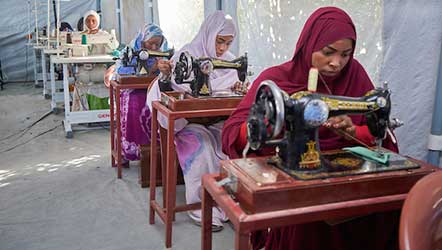
In an era marked by rapid technological advancement and shifting global economic landscapes, the imperative for inclusive growth and gender equality has never been more critical.

Managing Director Kristalina Georgieva and World Food Programme Executive Director Cindy McCain discussed their personal career journeys, investing in women and girls, and more.
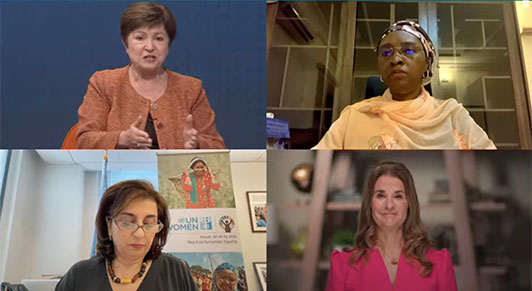
Kristalina Georgieva, Melinda French Gates, Hon. Zainab Ahmed, and Sima Sami Bahous discussed how the IMF, governments, and others can work together to help reduce gender gaps.

Senior Advisor on Gender joined a panel discussion on the future of global population growth, and the pressures and opportunities it presents for women and girls.
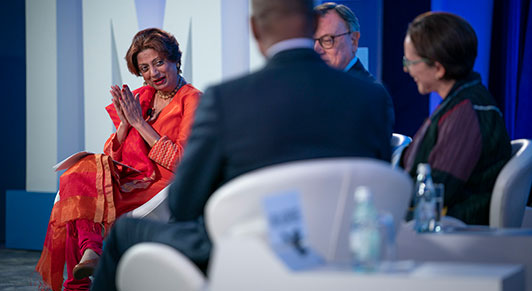
Discussion on why more women are needed in the financial sector, especially in leadership positions, and how this can help with financial sector stability and inclusive growth.
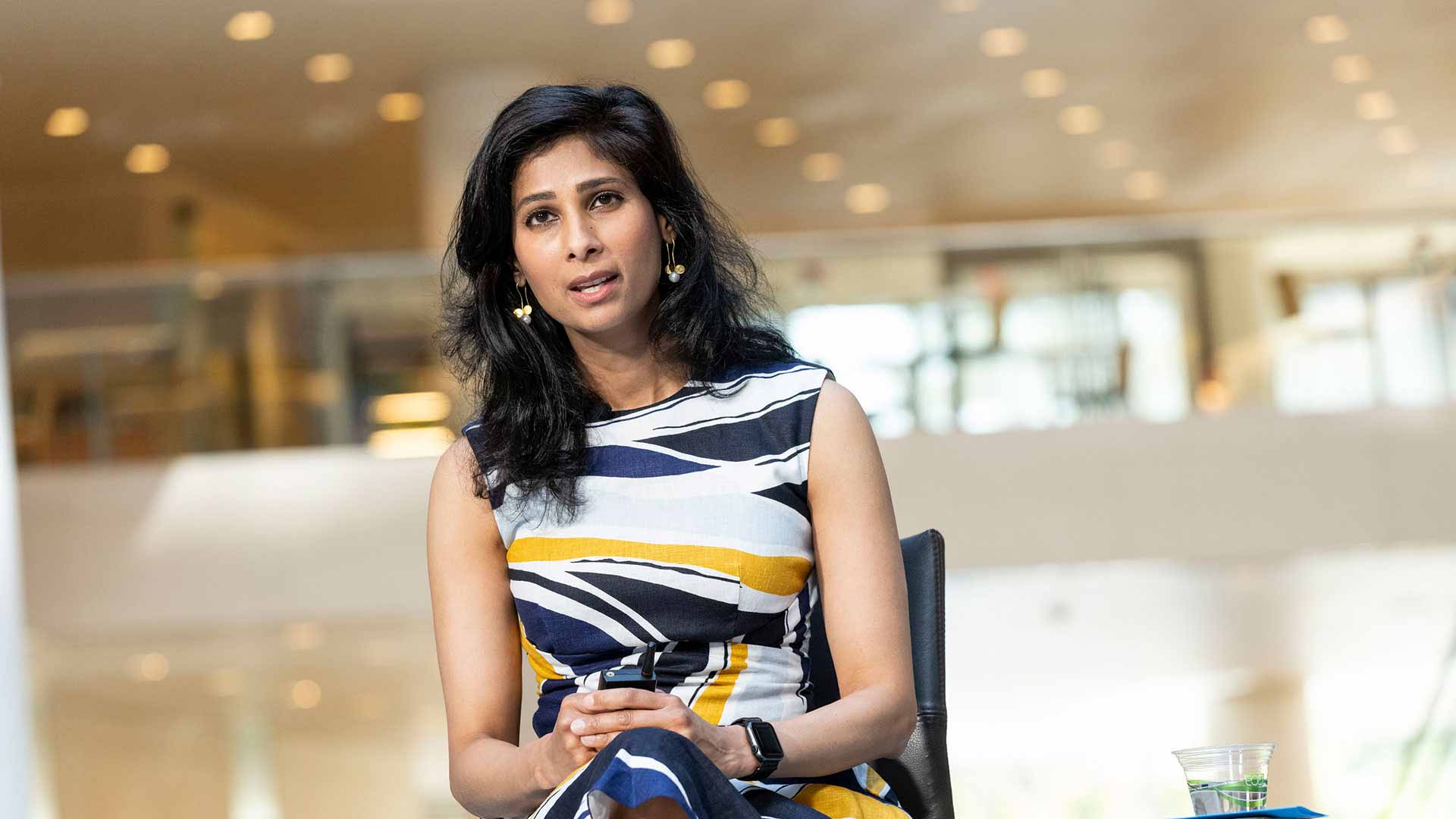
"Gender Equality Boosts Economic Growth and Stability:" remarks by Gita Gopinath, IMF First Deputy Managing Director, delivered at the Korea Gender Equality Forum.
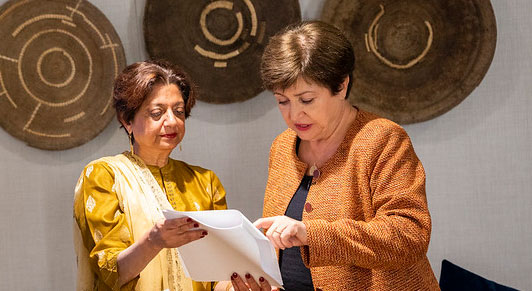
At the Center for Global Development, IMF's Ratna Sahay presented the recently approved IMF Strategy Toward Mainstreaming Gender, followed by a panel discussion.